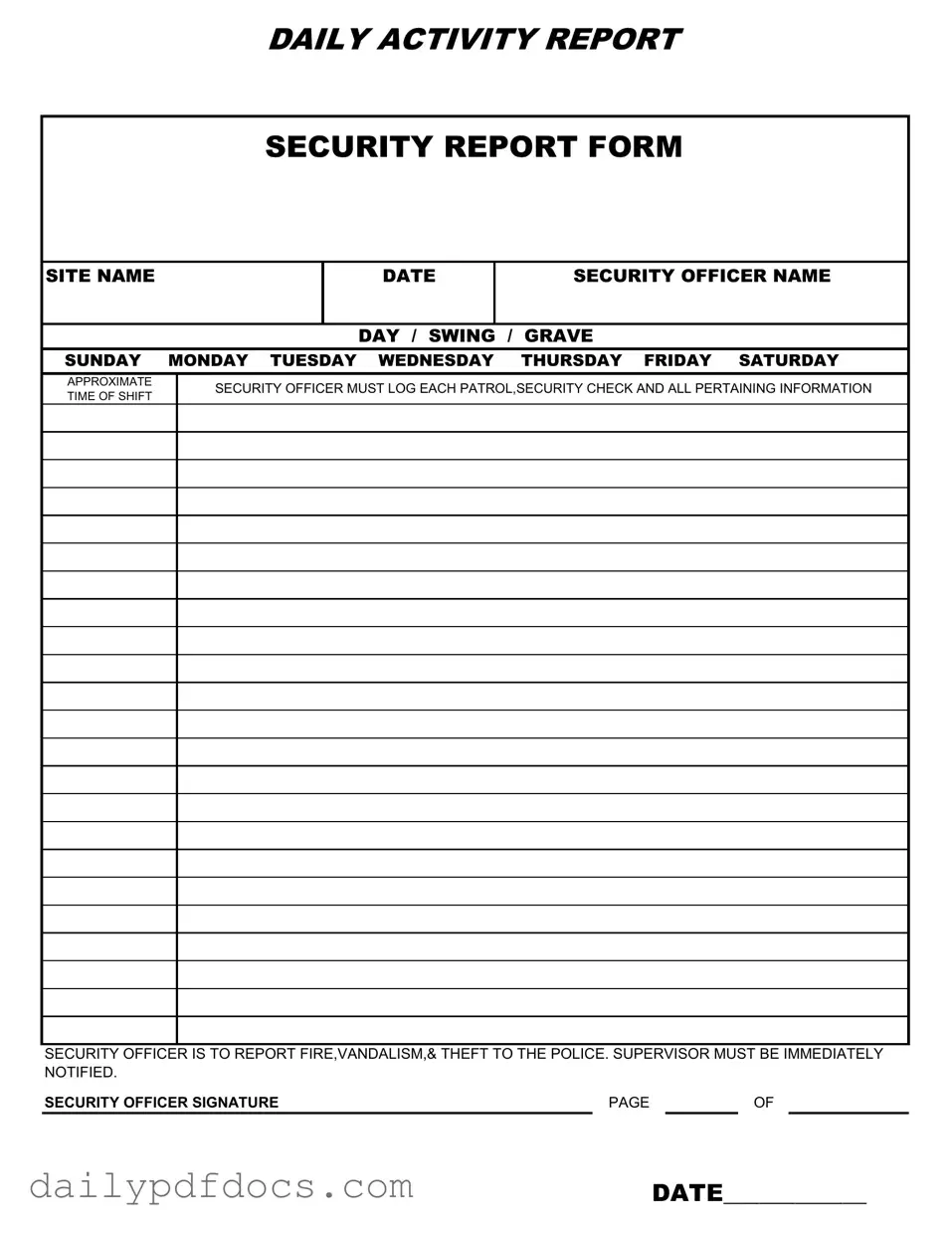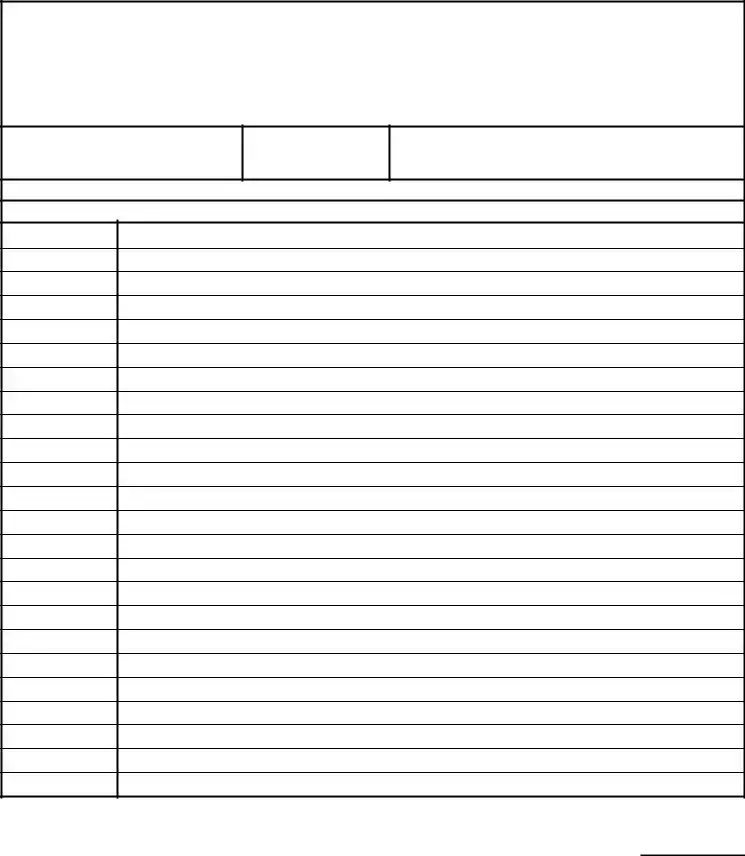What is the purpose of the Security Guard Daily Report Sample form?
The Security Guard Daily Report Sample form is designed to help security officers document their daily activities. This includes logging patrols, security checks, and any incidents that occur during their shift. The form serves as a record for both the security officer and their supervisors, ensuring that all necessary information is captured and communicated effectively.
What information is included in the report?
The report includes essential details such as the site name, date, and the name of the security officer. It also specifies the type of shift—day, swing, or graveyard. Officers are required to log each patrol and security check, along with any relevant incidents, such as fire, vandalism, or theft. Immediate notification to the police and supervisors is also a critical part of the report.
How should a security officer fill out the report?
A security officer should fill out the report at the end of their shift. They must accurately record the date, their name, and the time of their shift. As they conduct patrols and security checks, they should log these activities in the designated sections. If any incidents occur, they must detail them clearly, noting the time and nature of the event.
What should be done in case of an incident?
In the event of an incident such as fire, vandalism, or theft, the security officer must report it to the police immediately. It is also essential to notify a supervisor right away. Proper documentation of the incident should be included in the daily report, ensuring that all relevant details are captured for future reference.
Is there a specific format for logging patrols and checks?
While the form provides spaces for logging patrols and security checks, there is no strict format. Officers should use clear and concise language to describe their activities. It is important to note the approximate times and any observations made during these checks. Consistency in logging will help maintain an accurate record.
How often should the report be submitted?
The report should be submitted at the end of each shift. This allows for timely updates and ensures that any incidents are addressed promptly. Regular submission helps maintain a comprehensive record of security activities at the site.
Who reviews the Security Guard Daily Report?
The report is typically reviewed by a supervisor or security management team. They will assess the activities logged, any incidents reported, and overall security measures taken during the shift. This review process is crucial for maintaining safety and security protocols at the site.
Can the report be modified for different sites?
Yes, the report can be modified to fit the specific needs of different sites. While the core elements should remain consistent, additional sections can be added to address unique security concerns or protocols specific to a location. Customizing the report ensures that all relevant information is captured effectively.
What happens if a security officer forgets to log an incident?
If a security officer forgets to log an incident, it may lead to gaps in the security record. This can impact the response to the situation and the overall safety at the site. Officers are encouraged to be diligent in their documentation and to review their logs before submitting the report to ensure all incidents are accounted for.

